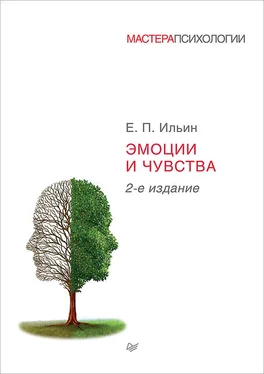Allport F. H. Social psychology. Cambridge, Houghton Mifflin, 1924.
AltshulerJ. M. The past, present and future of music Therapy // In: E. Podolsky (ed.). Music therapy. N.-Y., Philosophical Library, 1954, p. 335.
AlwinJ. Music therapy. London, 1966.
Ambrose J. The concept of a critical period for development of social responsiveness in early human infancy // Determinants of infant behavior, 1961, №2, p. 27—49.
Andersen P. A., Eloy S. V., Guerrero L. K., Spitzberg В. Н. Romantic jealousy and relational satisfaction: A look at the impact of jealousy experience and expression // Communication Reports, 1995, v. 8(2), p. 77—85.
Archer D., Akert R. M. Probleme of context and criterion in nonverbal communication: a new look at the accuracy issue // Issues in person perception. Mothuen, London. N.-Y., 1984, p. 114—144.
Argile M., Henderson M. The rules of friendship //J. of Social and Personal Relationships, 1984, v. 1, № 2, p. 211—237.
Aries P. The hour of our death. N.-Y., 1981.
Arnold M. B. Emotion and Personality, v. 1. Psychological aspects, v. 2. Neurological and physiological aspects. N.-Y., Columbia University Press, 1960.
Arnold M. B . Emotion, motivation and the limbic system // Annual N.-Y. Acad. Science, 1969, v. 159, № 3.
Arnold M. B., Gasson J. A . Feelings and emotions as dinamics factors in personality integration // In: Arnold M. B., Gasson J. A. (eds.). The human person. N.-Y., 1954.
Aron A., Dutton D. G., Aron E. N., Iverson A . Experiences of falling in love // J. of Social and Personal Relationships, 1989, v. 6, p. 243—257.
Aronfreed J., Pascal V. Altruism, empathy and conditioning of positive affect // In: Altruism and helping behavior, N.-Y., 1970.
Asch S. E . Social psychology. Englewood Cliffs. N.-Y., Prentice Hall, 1952.
Ausubel D. P. Relationships between shame and guilt in the sosializing process // Psychological Review, 1955, v. 62, p. 378—390.
Averill J. R. Grief: Its nature and significance // Psychol. Bulletin, 1968, 70, p. 721—748.
Averill J. R. Studies of anger abd aggressio: Implications for theories of emotion // American Psycholoogist, 1982, v. 38, p. 1145—1160.
Averill J. R. In the eyes of the beholder // P. Ekman, R. J. Davidson (eds.). The nature of emotion: Fundamental questions. N.-Y., Oxford Univ. Press, 1994, p. 7–14.
Bain A . The emotions and the will. London, 1880.
Bakwin H. Emotional deprivation in infants // J. of Pediatrics, 1949, № 35.
Baldwin M. W., Keelan J. P. R., Fahr B., Enns V., Koh-Rangarajoo E. Social-cognitive conceptualization of attachment working models: Availability and accessibility-effects // J. of personality and Social Psychology, 1996, v. 71, p. 94–109.
Bandura A . Agression: a social learning analysis. N. Y., 1973.
Bandura A., Ross D., Ross Sch. Transmission of agression through imitation of aggressive models // J. of Abnormal Soc. Psychology, 1961, v. 64.
Bankoff E. Peer support for widows: Personal and structural characteristics related to its provision // In: S. Hobfoll (ed.). Stress, social support, and women. Washington, 1986, p. 207—222.
Bard P. On emotional expression after decortication with some remarks on certain theoretical views // Psychol. Rev., 1934a, 41, p. 309.
Bard P. The neuro-humoral basis of emotional reactions // In: Murchison C. (Ed.). Handbook of General Experimental Psychology. Worcester, 1934 b.
Barden R. C., Zelko F., Duncan S. W., Masters J. C. Children’s consensual knowledge about the experimental determinants of emotion // J. of Personality and Social Psychology, 1980, v. 39, p. 968—976.
Barker R. G., Dembo T., Lewin K. Frustration and agression: an experimentwith young children // In: Studies in topologicaland vector psychology. v. 11. 1941, 18, № 1(386), ð. 1–314.
Barling J . Employment, stress and family functioning. Chichester, John Wiley and Sons, 1990.
Barmack J. E. Studies on the Psychophisiology of Boredom // J. Experim. Psychol., 1939, 25.
Barnett M. A., Brian J. H. Effects of Competition with Outcome Feedbeck on Childrens Helping Behavior // Developmental Psychology, 1974, v. 10, № 6.
Barret K. C. A Functional Approach to Shame and Quilt // J. P. Tangney, Fisher (eds.). Self-conscious emotions: The psychology of shame quilt, embarrassment, and pride. N.-Y., Quilford Press, 1995.
Barrett K. C., Zahn-Waxler C., Cole P. M. Avoiders versus amenders: Implications for the investigation og guilt and shame dyring toddlerhood // Cognition and Emotion, 1993, v. 7, p. 481—505.
Bartelt R. G. Physiologic responses during coitus // Journal of Applied Physiology, 1956, 9, № 3, p. 469—472.
Barth J., Bastiani A. A longitudinal study of emotion recognition and preschool children’s social behavior // Merrill-Palmer Quarterly, 1997, v. 43, p. 107—128.
Bartholomew K., Horowitz L. Attachment styles among young adults: A test of a four-category model // Journal of Personality and Social Psychology, 1991, v. 61, p. 226—244.
Basch M. F. The Concept of affect Are-examination // J. Am. Psychoanal. Assoc., 1976, 24, 759—778.
Baumeister R. F., Stillwell A. M., Wortman S. R. Victim and perpetrator accounts of interpersonal conflict: Autobiografical narratives about anger // J. of Personality and Social Psychology, 1990, v. 59, p. 994–1005.
Bavelas J. B., Black A., Lemery S., Mullet J. Motor mimicry as primitive empathy // N. Eisenberg, J. Strayer (eeds.). Empathy and its development. Cambridge Studies in social and emotional development. Cambridge, University Press, 1987.
Bawers D., Baner R. et al. Dissociation between judgments of facial affect and facial identity // Brain and Cognition, 1985, v. 4–13.
Bearon L . No great expectation: underpinnings of laif satisfaction for older women // The Gerontologist, 2989, v. 29, p. 772—776.
Beck A. Cognitive therapy and the emotional disorders. N.-Y., International University Press, 1976.
Beck S. B., Ward-Hull C. I., Mc Lear P. M. Variables relatedto women’s somatic preferences of the male and famale body // J. of Personality and Social Psychology, 1976, v. 34, p. 1200—1210.
Belsky J., Fish M., Isabella R. Continuity and discontinuity in infant negative and positive emotoinality: Family antecedents and attachment consequences // Developmental Psychology, 1991, v. 27, p. 421—431.
Bender I. E., Hastdorf A. H. On measuring generalized empathic ability (social sensivity) // J. of abnormal and social psychol., 1953, v. 48.
Benedict R. Patterns of culture. Boston, Houghton Mifflin, 1934.
Beres D., Arlow J. A . Fantasy and identification in empathy // Psychol. Abstract, 1974, v. 52, № 3, 5330.
Berg B. The crisis of the working mother. Summit US. 1986.
Berger S. M. Conditioning through vicarious instigation // Psychol. Rev., 1962, v. 69.
Bergson H . Le rire. Essai sur la signification du comic. Paris, 1910.
Berkowitz L. The Frustration-Agression Theory: A Social Psychological Analysis. N.-Y., 1962.
Berndt T . Social cognition, social behavior and children’s friendships // In: E. T. Higgins, D. Ruble, W. Hartup. Social cognition and social development. A sociocultural perapective. Cambridge, 1983.
Berrien F. K . Finger oscillation as indeces emotion. 1. Preliminary volidation // Journal of Experimental Psychology, 1939, v. 24, p. 485.
Читать дальше
Конец ознакомительного отрывка
Купить книгу












